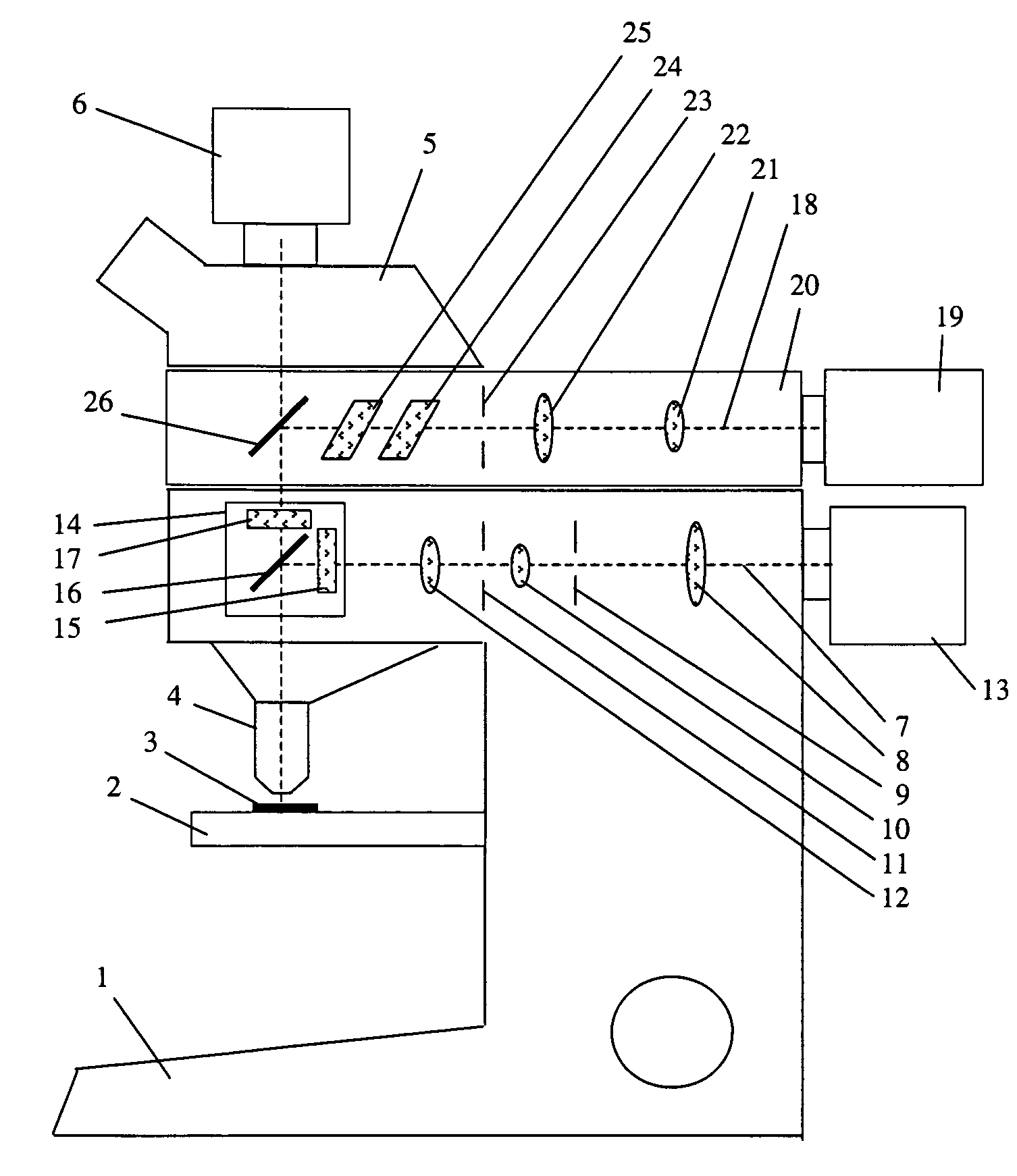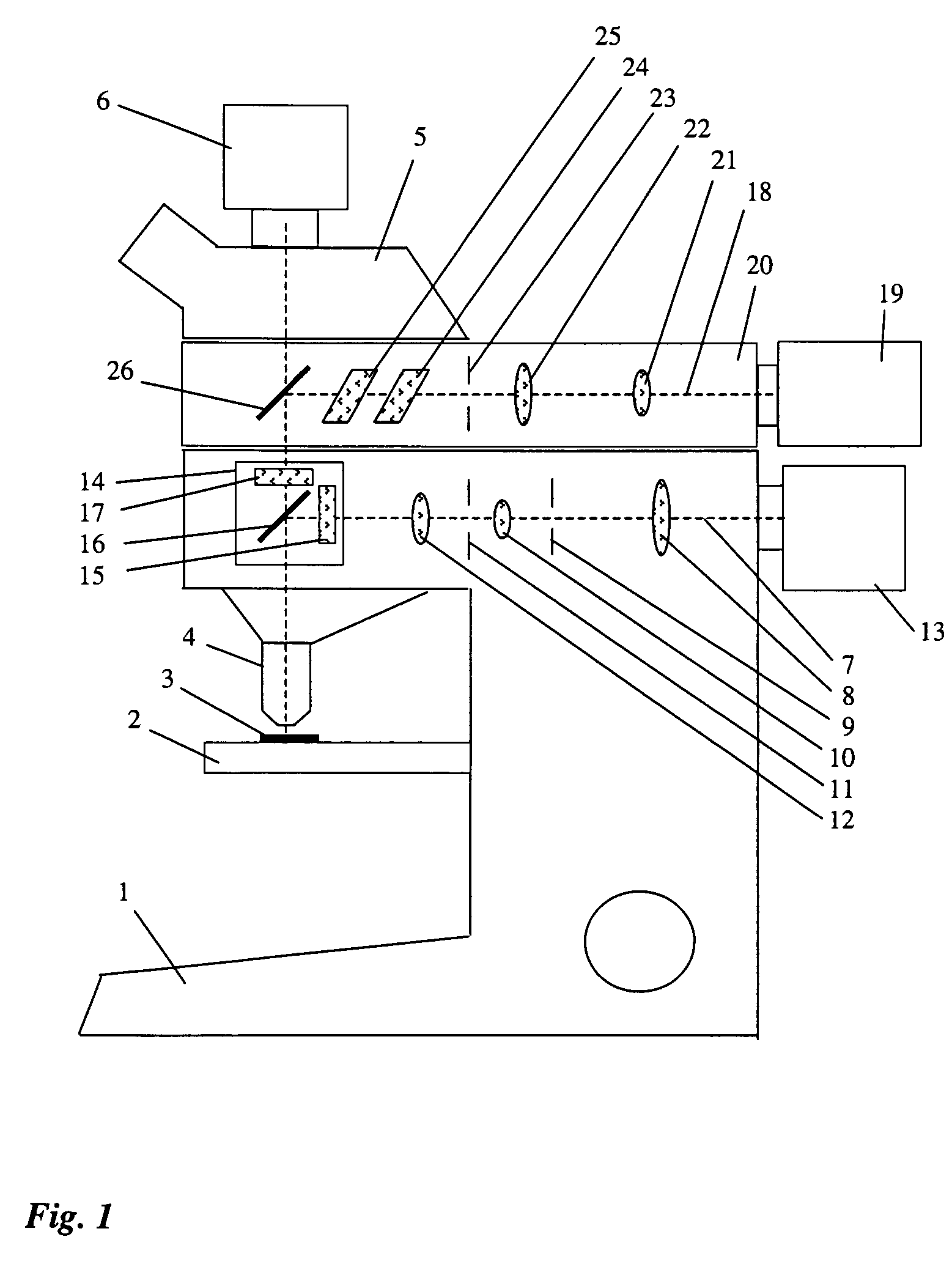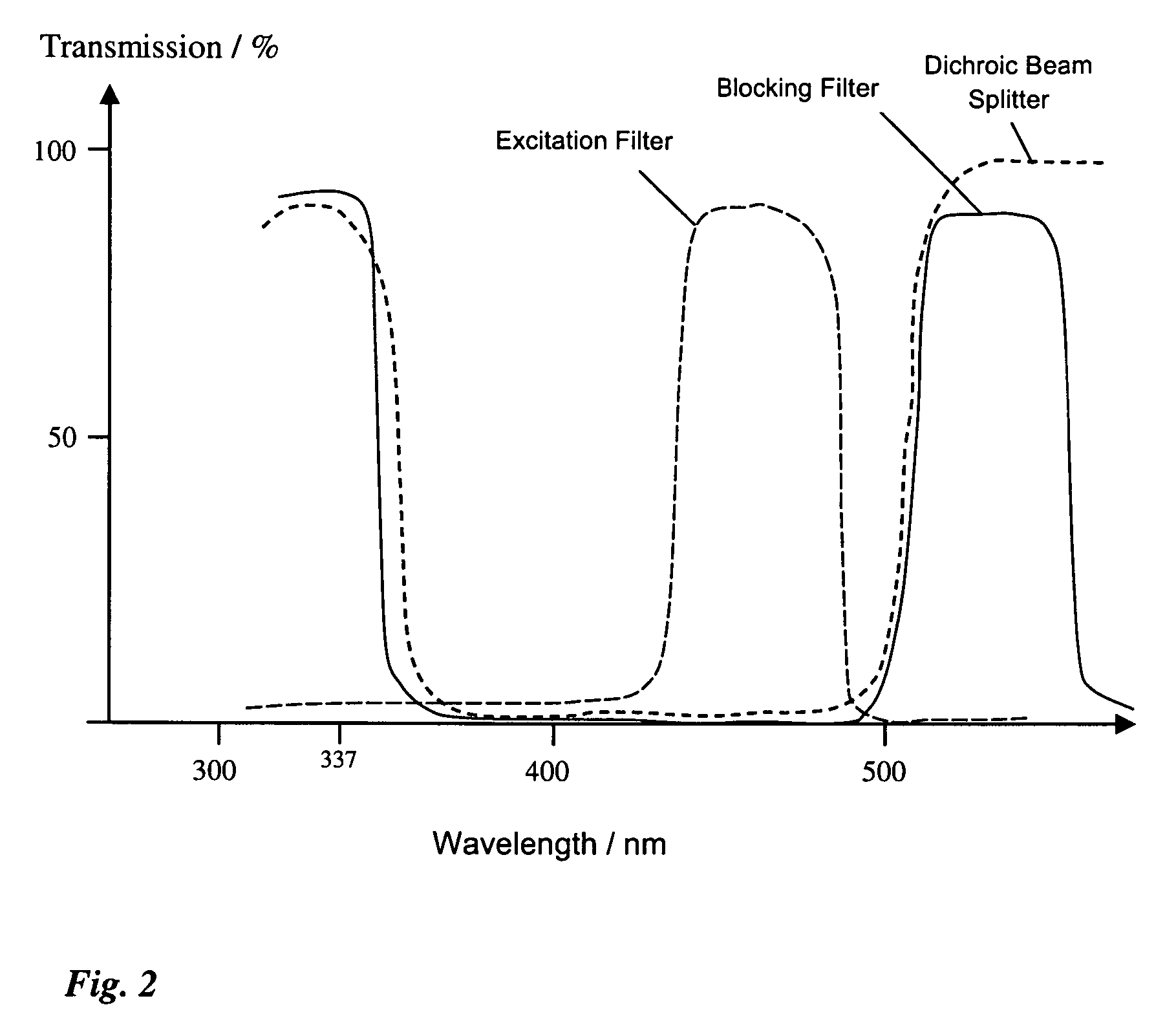Laser microdissection unit
a laser microdissection and laser technology, applied in the field of laser microdissection units, can solve the problems of not being able to achieve simultaneous fluorescence observation and microdissection
- Summary
- Abstract
- Description
- Claims
- Application Information
AI Technical Summary
Benefits of technology
Problems solved by technology
Method used
Image
Examples
Embodiment Construction
[0018]FIG. 1 shows a laser microdissection unit with a microscope 1. Sample 3 is arranged on microscope stage 2, and is imaged through an objective 4 and a tube 5 onto a camera. Microscope 1 comprises an integrated fluorescence axis 7 in which a lens 8, an aperture diaphragm 9, a lens 10, a field diaphragm 11, and a lens 12 are arranged. The illuminating light proceeding from lamp housing 13 passes along integrated fluorescence axis 7 and strikes fluorescence device 14. The latter encompasses an excitation filter 15, a dichroic beam splitter 16, and a blocking filter 17, which are spectrally matched to at least one fluorescent dye and its fluorescence band.
[0019]A microdissection beam path 18 with a UV laser 19 is arranged above integrated fluorescence axis 7. Microdissection beam path 18 is arranged in a structural unit 20 that is placed onto microscope 1, above integrated fluorescence axis 7, as an attachment.
[0020]The laser beam proceeding from UV laser 19 travels, in microdissec...
PUM
 Login to View More
Login to View More Abstract
Description
Claims
Application Information
 Login to View More
Login to View More - R&D
- Intellectual Property
- Life Sciences
- Materials
- Tech Scout
- Unparalleled Data Quality
- Higher Quality Content
- 60% Fewer Hallucinations
Browse by: Latest US Patents, China's latest patents, Technical Efficacy Thesaurus, Application Domain, Technology Topic, Popular Technical Reports.
© 2025 PatSnap. All rights reserved.Legal|Privacy policy|Modern Slavery Act Transparency Statement|Sitemap|About US| Contact US: help@patsnap.com



